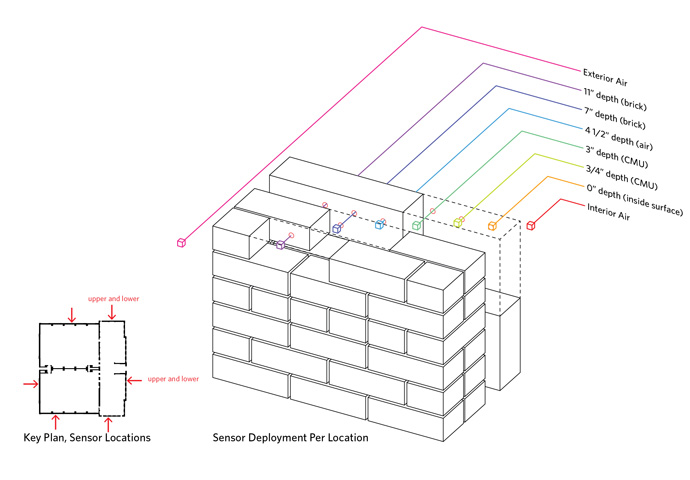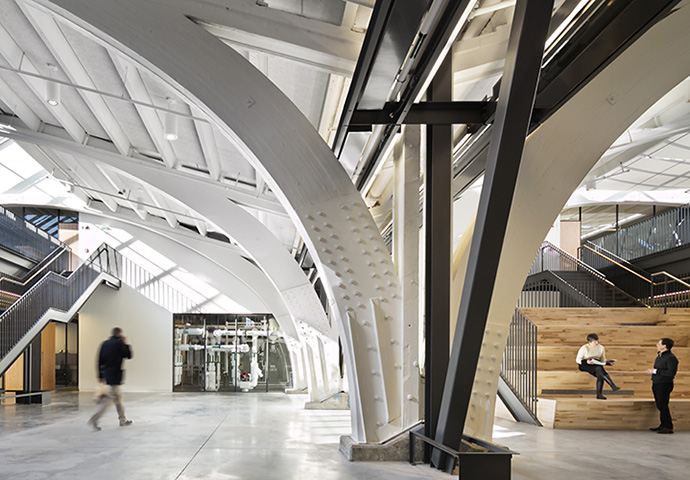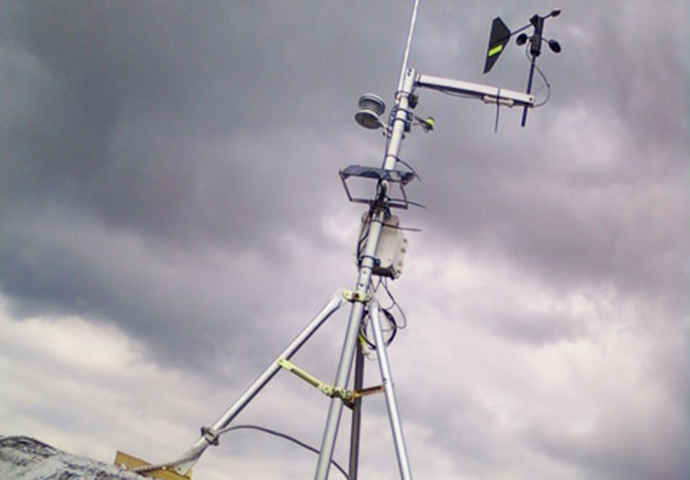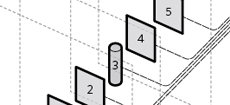Heating It Up to Cool It Down
Vacant since 1995, the former Navy Recreation Building was heated so the performance of it existing walls could be monitored as part of an advanced energy retrofit.
Our latest experiment with building sensor networks—undertaken as part of the retrofit of Building 661 (The Building Energy Sciences Center) for the Energy Efficient Buildings (EEB) Hub, one of three innovation clusters created by the Department of Energy in 2011—has yielded some interesting results.
Concurrent with a heating and thermal imaging exercise in the building, which is not insulated and has been unoccupied since 1996, we launched a series of sensors to read temperatures in the walls. The empty building was heated for two days and recorded with infrared cameras to discover points of heat loss and moisture infiltration, providing a basis to compare the building envelope's thermal performance before and after the retrofit.
Building 661 test locations on each facade and sensor depths within the masonry wall at each test location.
We deployed 57 sensors across Building 661's envelope section at varying depths, with eight sensors at each location: two sensors to read interior ambient and surface temperatures, and six sensors placed at varying depths to read temperatures within the wall itself. The sensors captured the cool-down period for a total duration of three days. Data not only corroborated exterior surface temperature readings from the thermal imaging analysis, but also provided a cross-section of temperatures to reveal the nature of the dynamic thermal transfer occurring through the envelope materials. This information is not perceptible with thermal imaging techniques.
Using a custom-developed thermal transfer tool, we determined the rate of heat transfer (thermal diffusivity) between each sensor location. Combining thermal resistance with heat capacity, these constants describe the relative ability of each wall section to inhibit thermal transfer and resist temperature change, expressed in units of time.
Using these calculated constants, we can accurately predict the thermal behavior of any wall section over time using adjacent sensor readings as boundary conditions, as the graph below indicates.
Comparison of interior surface temperature (green) with temperature predicted by thermal performance constants (magenta) calculated from adjacent sensor readings (black).
These diffusivity constants enhance our understanding of building performance in multiple ways. When we know boundary conditions, such as real-time weather data, we can predict the time-dependent behavior of a wall section using 1-d finite element analysis, as shown in the graph above. We can also compare the calculated diffusivities against the expected bulk material properties of each material to vary energy model inputs.
For example, common brick typically has a resistance of R-0.2 per inch, and a heat capacity of 3.6 Btu/ft²°F per inch, yielding an expected diffusivity of 0.72 hr x thickness². Therefore, our measurement of the brick layers at Building 661 with sensors four inches apart should have yielded diffusivities of 11.5 hours. In reality, our calculated diffusivities were often lower, ranging from 4.3 hours to 11.2 hours. This suggests that the existing wall construction, particularly in certain areas, offers less thermal benefit (in terms of both thermal resistance and thermal inertia) than would be predicted from bulk material properties alone.
Although this confirms that the thermal value of the existing wall falls below expectations, we can also see that it holds onto a lot of heat. We typically think of a wall's performance in terms of its thermal resistance, but our research suggests that the temperature profile depends just as much on the wall's capacity to absorb heat (i.e. resist temperature change) as on its capacity to resist heat flow.
If we can compare the performance of different wall assemblies utilizing the tools we have developed, we can quality assure our energy models, ensuring optimal performance is delivered.









